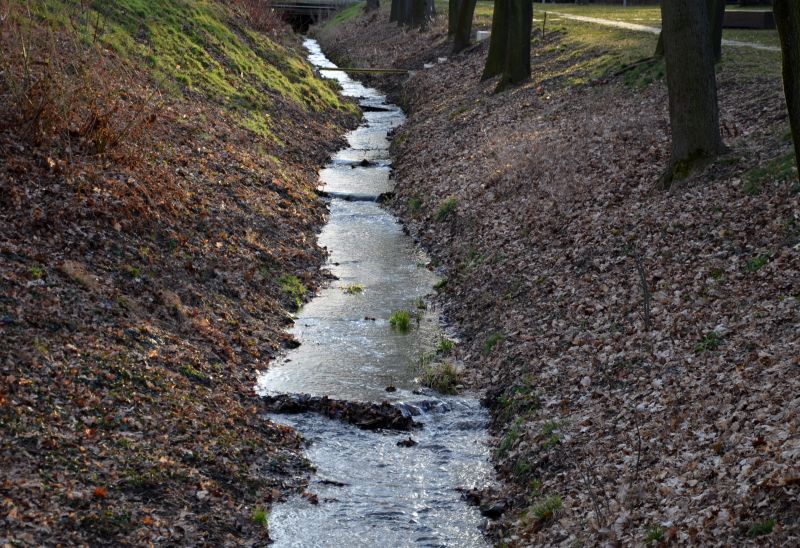Top-Rated Products For Professional Drainage Service Tasks
Browse high-performance products crafted to handle various drainage challenges and deliver consistent results.
 Proper drainage is essential for maintaining the integrity and safety of residential, commercial, and industrial properties. Drainage products help manage water flow, prevent flooding, and protect structures from water damage. In Painesville, OH, where seasonal rains and snowmelt can impact property conditions, selecting the right drainage solutions is vital for effective water management. From simple solutions like drain covers to complex systems like trench drains, there are numerous options tailored to different needs.
Proper drainage is essential for maintaining the integrity and safety of residential, commercial, and industrial properties. Drainage products help manage water flow, prevent flooding, and protect structures from water damage. In Painesville, OH, where seasonal rains and snowmelt can impact property conditions, selecting the right drainage solutions is vital for effective water management. From simple solutions like drain covers to complex systems like trench drains, there are numerous options tailored to different needs.
Top Overall Option
Modular Trench Drain System
A modular trench drain system offers flexible installation options and effective water management for various property types. Its customizable length and grate designs facilitate efficient drainage and easy maintenance, making it a practical choice for many drainage applications.
Types of Products For Drainage Service
Catch Basins
Catch basins collect surface water and debris, directing it into drainage pipes for safe removal.
Channel Drains
Channel drains are linear systems designed to handle high volumes of surface water along walkways and driveways.
Sump Pumps
Sump pumps are used to remove accumulated water from basements or low-lying areas.
Pipe Fittings
Various pipe fittings connect drainage pipes and ensure proper water flow and direction.
Drain Covers and Grates
Grates prevent debris from entering drainage systems while allowing water to pass through.
Flexible Drain Pipes
Flexible pipes adapt to complex layouts and are easy to install in tight spaces.
French Drains
French drains consist of perforated pipes surrounded by gravel to redirect groundwater away from structures.
Surface Drainage Mats
Drainage mats help manage water flow across surfaces and prevent erosion.
Subsurface Drainage Systems
These systems are installed underground to control water table levels and prevent foundation issues.
Rainwater Harvesting Systems
These systems capture and store rainwater for reuse, reducing runoff and conserving water.
Drain Cleaning Tools
Tools like augers and high-pressure water jets help maintain clear drainage pathways.
Waterproof Membranes
Membranes are used to prevent water infiltration in basements and underground structures.
Erosion Control Products
Erosion control mats and barriers help stabilize soil and manage surface runoff.
Perforated Drain Tiles
Drain tiles are used in foundation drainage and landscaping to manage groundwater flow.
Drainage Pumps
Pumps are used in various applications to actively move water away from problem areas.
Popular Choices
Widely used for surface water collection in driveways and parking lots.
Commonly installed along walkways and patios for efficient water runoff management.
Popular for basement waterproofing and managing groundwater accumulation.
Frequently chosen for landscape drainage and foundation protection.
Essential for outdoor drainage systems to prevent clogging and debris entry.
Valuable for retrofit projects and tight installation spaces.
Commonly used in basement waterproofing applications.
Popular for stormwater management on construction sites and slopes.
Chosen for foundation drainage and landscape irrigation projects.
Regularly used for maintenance and clog removal in drainage systems.
Increasingly popular for water conservation and runoff reduction.
Often selected for managing groundwater around structures.
Used in areas prone to standing water or flooding.
Effective for managing surface water in landscaped areas.
Applied to stabilize soil and prevent erosion on slopes.
Available for DIY landscape drainage projects.
Drainage systems often require components that work together to direct water away from foundations, walkways, and landscaping. These components can include catch basins, channel drains, pipe fittings, and sump pumps. Proper installation and maintenance are key to ensuring these systems function as intended, reducing the risk of water pooling and related issues. Whether for new construction or upgrades to existing infrastructure, understanding the variety of available products helps property owners and contractors make informed choices.
In addition to basic drainage components, there are specialized products designed to handle unique challenges such as heavy runoff, clog prevention, and ease of access for maintenance. For example, innovative grate designs can improve water flow while minimizing debris accumulation. Modular systems allow for customization based on site-specific requirements, making them versatile options for a range of applications. By selecting appropriate drainage products, property owners in Painesville can better manage water flow and protect their investments from water-related damages.
Key Buying Considerations
- Determine the volume of water that needs to be managed to select appropriately rated products.
- Assess the type of surface or area where drainage is required, such as driveways, lawns, or basements.
- Consider the material of the drainage components for durability and compatibility with existing infrastructure.
- Evaluate ease of installation and whether professional assistance is needed.
- Check for debris-resistant features in grates and covers to reduce maintenance.
- Ensure the system design allows for future expansion or modifications if needed.
- Review local building codes and regulations related to drainage systems.
- Consider the environmental conditions, such as soil type and rainfall patterns, that influence drainage needs.
- Look for products with good flow capacity to prevent clogging and backups.
- Select components that are resistant to corrosion, rust, and UV damage for longevity.
- Evaluate maintenance requirements and accessibility for cleaning or repairs.
- Think about aesthetics if the drainage system will be visible in landscaped or paved areas.
- Determine if additional accessories, like filters or connectors, are necessary for a complete system.
- Assess the cost-effectiveness of the system in relation to its expected lifespan and performance.
- Consider compatibility with existing drainage infrastructure to ensure seamless integration.
